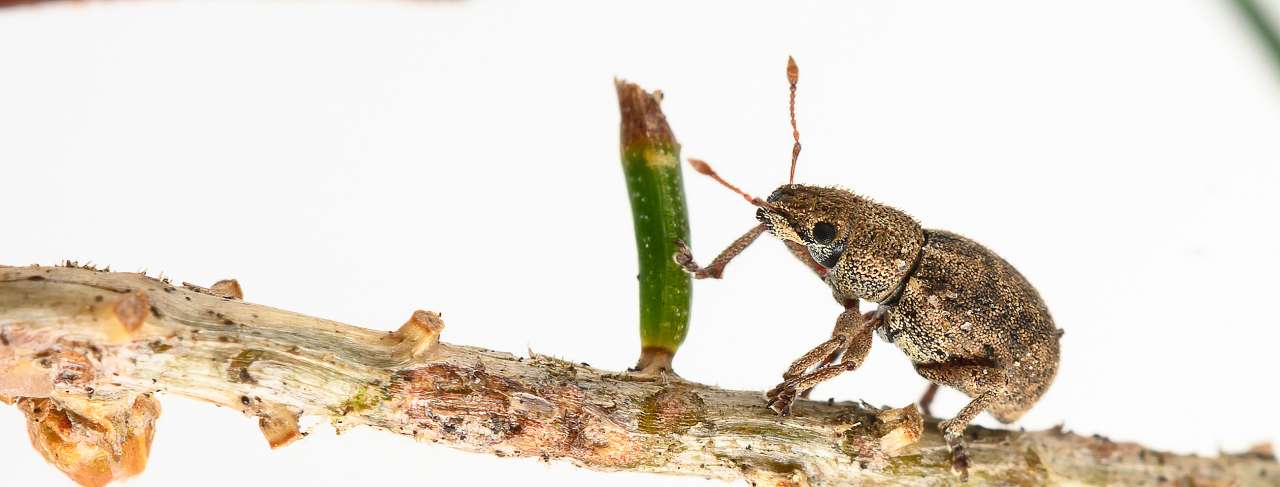Broad-nosed weevil – an underrated pest

Photo: Erling Fløistad
Pine weevils usually get blamed for insect damages on young spruce seedlings. However, new findings show that other weevils, such as the broad-nosed weevils, can also cause significant damages, particularly after prolonged drought.
Planting forests is both expensive and labour-intensive. For forest owners, it is crucial that young seedlings have the best possible growing conditions and are protected from diseases and pests.
Damage to small spruce and pine seedlings is typically attributed to the pine weevils. However, Torstein Kvamme, senior adviser at NIBIO, draws attention to the broad-nosed weevil Strophosoma capitatum - a well-known pest in other European countries but has remained somewhat under the radar in Norway.
These beetles feed on a wide variety of plants and can cause significant damage under the right conditions. While the larvae live on roots, the adult beetles consume green plant parts, including conifer needles.
One type of broad-nosed weevil in particular is responsible for damage to spruce plantations. Newly established planting sites are especially vulnerable during periods of severe drought and low ground vegetation.
Broad-nosed weevils feed on conifer needles.
If the roots are strong and the seedlings are not too small, they can often survive an attack. However, Kvamme points out that climate change spells bad news for spruce trees.
“If conditions become so dry that ground vegetation disappears, it will create more opportunities for broad-nosed weevil damages,” he warns.
He encourages forest owners to monitor their planting sites closely. Using larger seedlings with strong root systems could be beneficial, as this may increase their chances of survival.
Contacts

Purpose
To inform about the broad-nosed weevil as a pest affecting conifers in Norway.
Contacts

